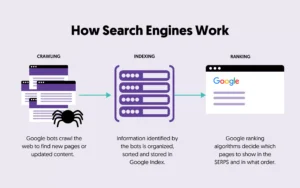In today’s digital world, online security is crucial. HTTPS plays a vital role in this.
HTTPS, which stands for HyperText Transfer Protocol Secure, is the secure version of HTTP. It ensures that data sent between your browser and a website is encrypted. This encryption protects sensitive information like passwords and credit card details from hackers.
Using HTTPS has become a standard practice for websites, enhancing user trust and safety. But how does HTTPS really work? And why is it so important? In this blog post, we will explore the basics of HTTPS, its benefits, and why every website should adopt it. Stay tuned to understand more about this essential aspect of web security.

Credit: www.globalsign.com
Introduction To Https
In today’s digital world, the security of online data is crucial. One way to ensure this security is through the use of HTTPS. This protocol is essential for protecting the information exchanged between websites and users. Understanding HTTPS is vital for anyone who wants to keep their data safe on the internet.
What Is Https?
HTTPS stands for HyperText Transfer Protocol Secure. It is an extension of HTTP, the protocol used for data communication on the web. The ‘S’ in HTTPS stands for ‘Secure’. This means that data sent over an HTTPS connection is encrypted.
Encryption ensures that only the intended recipient can read the data. This helps to protect sensitive information like passwords, credit card numbers, and personal data from hackers.
Importance Of Https
HTTPS is important for several reasons:
- Security: It encrypts data, protecting it from cyber attacks.
- Trust: Users trust websites that use HTTPS, indicated by a padlock icon in the browser.
- SEO Benefits: Search engines like Google prefer HTTPS, leading to better rankings.
- Compliance: Many regulations require HTTPS to protect user data.
Here is a simple comparison table to highlight the differences between HTTP and HTTPS:
| Feature | HTTP | HTTPS |
|---|---|---|
| Security | Not secure | Secure |
| Data Encryption | No | Yes |
| SEO Advantage | No | Yes |
| Trust Indicator | No | Yes (Padlock icon) |
Switching to HTTPS is a smart move for any website. It boosts security, trust, and search engine rankings. This helps create a safer online environment for everyone.
How Https Works
Understanding how HTTPS works is key to knowing how to keep your data secure online. HTTPS, which stands for HyperText Transfer Protocol Secure, ensures that the data exchanged between your browser and the website remains private and secure. This section will break down the process into clear, simple steps.
Encryption Process
The encryption process in HTTPS ensures that data sent over the internet is unreadable to anyone except the intended recipient. This process involves converting plain text into coded text. Only the recipient can decode this text.
- First, your browser requests a secure connection to the website.
- The website responds with its SSL/TLS certificate.
- Your browser checks if the certificate is valid.
- If valid, a secure connection is established.
During this connection, the data is encrypted, making it secure from eavesdroppers.
Role Of Ssl/tls
SSL (Secure Sockets Layer) and TLS (Transport Layer Security) are protocols that provide the encryption for HTTPS. They ensure that the data remains private and integral between the server and the client.
| Protocol | Function |
|---|---|
| SSL | Encrypts the connection between client and server |
| TLS | Improved version of SSL, more secure and efficient |
Both protocols work by using a combination of public and private keys to encrypt the data. This ensures that the data remains confidential and unaltered during transmission.
Benefits Of Https
HTTPS, or HyperText Transfer Protocol Secure, is crucial for any website. It encrypts data, providing a secure connection. This process ensures that information shared between a user and a site remains private.
Enhanced Security
HTTPS offers superior security for both users and website owners. It encrypts data, making it hard for hackers to intercept. This encryption protects sensitive information like passwords and credit card numbers. Users feel safer knowing their data is secure. A secure site builds trust and credibility.
Improved Seo
Search engines prefer HTTPS websites. Google uses HTTPS as a ranking signal. Secure sites rank higher in search results. Better ranking increases visibility and traffic. HTTPS also improves page load speed. Faster pages enhance user experience and reduce bounce rates.

Credit: blog.cloudflare.com
Implementing Https
Implementing HTTPS is crucial for securing your website. HTTPS protects user data by encrypting the connection between the user’s browser and your server. It also boosts your site’s SEO ranking. Let’s explore the steps involved in implementing HTTPS.
Obtaining A Certificate
First, you need an SSL/TLS certificate. This certificate authenticates your website’s identity. You can get a certificate from a trusted Certificate Authority (CA). Some popular CAs include Let’s Encrypt, Comodo, and Symantec. Some hosting providers offer free SSL certificates. Choose one that fits your needs.
After selecting a CA, follow their instructions to generate a Certificate Signing Request (CSR). The CSR contains your domain details and public key. Submit the CSR to the CA to obtain your SSL certificate. Make sure to verify your domain ownership. This step is crucial for the issuance of your certificate.
Configuring Your Server
Once you have your SSL certificate, configure your server. This process varies depending on your server type. For Apache servers, you need to modify the httpd.conf or ssl.conf file. Add the paths to your certificate and key files. Ensure you restart the server after making these changes.
For Nginx servers, update the nginx.conf file. Specify the certificate and key file paths. Don’t forget to restart Nginx to apply the changes. It’s also important to redirect HTTP traffic to HTTPS. This can be done using rewrite rules in your server configuration.
Regularly monitor your certificate’s expiration date. Renew it before it expires to ensure uninterrupted HTTPS protection.
Common Challenges
Switching to HTTPS is essential for website security. Yet, it presents common challenges for site owners. These challenges can affect your site’s performance and security. Let’s explore two key issues: mixed content and certificate expiry.
Mixed Content Issues
Mixed content occurs when a secure HTTPS page loads insecure HTTP resources. This can be images, scripts, or styles. Browsers block these insecure elements. This results in a broken page layout or missing content. Ensure all elements on your site use HTTPS. This prevents mixed content errors. Use tools to identify and fix mixed content. It keeps your site secure and functional.
Certificate Expiry
SSL/TLS certificates have expiry dates. When they expire, browsers show a warning to users. This can lead to trust issues and loss of traffic. Regularly check your certificate’s expiry date. Set reminders to renew your certificates on time. Some providers offer auto-renewal services. This ensures your site remains secure and trustworthy.
Https And User Trust
HTTPS is vital for securing websites. It encrypts data and protects user information. This security boosts user trust, leading to better engagement and conversions. Below, we explore how HTTPS impacts user trust.
Trust Indicators
Users notice trust indicators in their browser. The most common are:
- Padlock Icon: A padlock next to the URL shows the site is secure.
- HTTPS in URL: The URL starts with ‘https://’ instead of ‘http://’.
- SSL Certificate: Clicking the padlock reveals certificate details.
These indicators assure users their data is safe. This increases confidence in the site.
Impact On User Behavior
HTTPS affects user behavior in several ways:
- Higher Engagement: Users trust secure sites more. They stay longer and interact more.
- Lower Bounce Rates: Users leave insecure sites quickly. HTTPS helps reduce bounce rates.
- Increased Conversions: Trust leads to more purchases and sign-ups.
Here’s a comparison of secure vs. insecure sites:
| Metric | Secure Site (HTTPS) | Insecure Site (HTTP) |
|---|---|---|
| Average Session Duration | 5 minutes | 2 minutes |
| Bounce Rate | 30% | 70% |
| Conversion Rate | 5% | 1% |
These metrics highlight the importance of HTTPS. Users feel safer and are more likely to engage.
Case Studies
Exploring case studies provides a real-world view of HTTPS implementations. These stories highlight both successes and challenges. They offer valuable lessons for website owners considering HTTPS. Understanding these cases can guide better decision-making.
Successful Implementations
A leading e-commerce site switched to HTTPS. This change boosted user trust. Sales increased by 20% in six months. Another case involves a blogging platform. They moved to HTTPS and saw a 15% rise in organic traffic. Users felt safer, and engagement grew.
Lessons Learned
One company faced initial technical issues with HTTPS. They learned the importance of thorough testing. Another business found that not all browsers supported their new HTTPS setup. Updating their settings resolved this. These examples stress the need for careful planning.
Credit: www.google.com
Future Of Https
The future of HTTPS looks promising. With the internet evolving, HTTPS continues to play a crucial role in ensuring secure communications. This article explores the upcoming changes and advancements in HTTPS.
Evolving Standards
New standards for HTTPS are emerging. These standards aim to enhance security. The goal is to protect data more effectively. TLS 1.3 is one such example. It offers improved security features and faster connections. Browsers and websites are adopting these new standards quickly.
Emerging Technologies
New technologies are shaping the future of HTTPS. One of them is QUIC. It enhances connection speeds and security. QUIC is already being used by major browsers. Another technology is HTTP/3. It builds on the strengths of HTTP/2. HTTP/3 ensures faster and more secure data transmission. These advancements make HTTPS more robust and reliable.
Frequently Asked Questions
What Is Https?
HTTPS stands for HyperText Transfer Protocol Secure. It encrypts data between your browser and the website. It ensures secure communication.
Why Is Https Important?
HTTPS is crucial for security. It protects sensitive data like passwords and credit card details. It also improves website trust.
How Does Https Work?
HTTPS uses SSL/TLS protocols. These protocols encrypt data during transmission. It ensures data integrity and confidentiality.
Can Https Improve Seo?
Yes, HTTPS can improve SEO. Google prefers secure websites. It can boost your search engine rankings.
Conclusion
Secure your website with HTTPS today. HTTPS ensures data protection and user trust. It’s crucial for SEO rankings and improves site performance. Switching to HTTPS is simple and offers many benefits. Your visitors will feel safer and more confident. Start protecting your site and your users now.
Implement HTTPS and enjoy a secure, trusted web presence.
Ms.Sultana brings over 16 years of expertise working with global Clients by providing different skills and Services. For the last 5 years working as an Affiliate marketer, specializing in high-ticket campaigns that drive exponential growth. She holds a degree in Computer Science and Engineering as well as achieved many more skills certificates from different institute/academies/Platform. As part of the Elite Global Marketing team, Sultana has helped clients generate millions in revenue through strategic partnerships, innovative funnels, and data-driven insights.

























